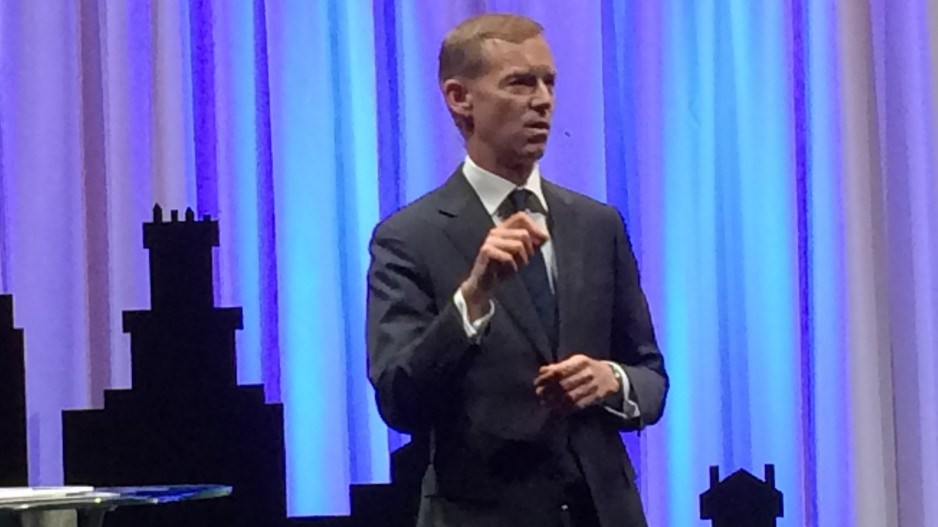Tourism Vancouver is poised to have more money jangling in its pockets this year as visitation to the city keeps growing and an increased hotel tax ensures more revenue.
One thing dogging the destination-marketing body, however, is its long-term debt, which is $113.8 million and continues to rise.
“The ultimate amortization of our debt to the province, which is the money we used to support the redevelopment of the convention centre, will get paid down probably over a period of 35 to 45 years,” Tourism Vancouver CEO Ty Speer said in response to a stakeholder’s question at his organization’s June 22 annual general meeting (AGM) at Rogers Arena.
Longtime repayment of that debt was Tourism Vancouver's strategy from Day 1.
He explained that exactly how fast the debt is paid depends on both hotel occupancy and rates in the decades ahead.
Tourism Vancouver’s operational budget swung to a $710,630 surplus last year from a deficit of $1,616,320 the year before.
The lion’s share of Tourism Vancouver’s $12.4 million in 2015 net revenue came from a hotel tax, which rose during the year.
Hotel guests not only pay an 8% provincial sales tax on hotel-room visits, they also pay a 3% levy that is cryptically dubbed the Municipal and Regional District Tax (MRDT).
The MRDT was 2% until September 1, when the province approved Tourism Vancouver’s request to raise it by 50%.
Tourism Vancouver collects the 3% MRDT from guests who stay at hotels in the city of Vancouver and then gives one-third of the revenue that the tax generates back to the province. Tourism Vancouver keeps the rest.
Speer also revealed a three-year plan at the AGM – a set of goals that would see his organization’s net revenue increase to $16.25 million by 2018.
Another part of the plan is to help attract 10.5 million overnight visitors to Vancouver. That would be up from 9.4 million visitors last year.
Speer expects that about 9.8 million visitors will come to Vancouver this year.
A few of Speer’s other goals for 2018 include:
•ensuring that Vancouver has a total of 24 tourism events outside meetings and business conventions;
•enabling hotels to achieve an 80% occupancy rate, which is up from 77% last year; and
•creating a tourism climate where visitors combine to spend a total of $5 billion.




